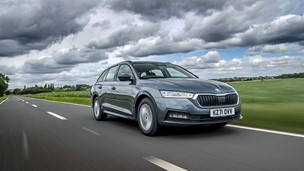A personal loan is a popular way to finance a new or used vehicle purchase. Borrowing money from a bank, building society or other lender gives you instant ownership of a car. Comparison websites such as moneysupermarket.com will show you which money-lenders off the best deals.
The annual percentage rate (APR) is the easiest way to compare loans, and essential in working out how much a loan will cost you over its lifetime. If the APR isn’t clearly mentioned, then ask for it. The headline rate isn’t necessarily what you’ll get; it can vary, depending on your credit-worthiness.
It’s tempting to go for longer loan periods, because that means smaller monthly payments- but you’ll pay more through interest. Be as disciplined as you can about keeping the loan term as short as possible, as this will help you to change your vehicle at your desired term.
The downside of an unsecured personal loan is that any of your assets could be seized in the event of a default on the payments. With dealer finance, only the car is vulnerable to repossession.
Is a Personal Loan suitable for me?
A personal loan may be suitable for you if:
· You don’t have a deposit for a finance deal and there is no deposit available from the dealer scheme.
· You want to own the car outright.
· You plan to keep it for a long period.
· You don’t want annual mileage restrictions.
Points to consider
Before deciding whether or not to go ahead with a personal loan in order to get a car, there are a few more factors worth considering first:
· Your application for a personal loan will not necessarily be accepted.
· Some personal loans have variable interest rates, meaning they can go up or down.
Also, you may not actually get the interest rate advertised with the loan, which is known as the representative APR (or annual percentage rate). This is the rate that you will see on posters or banks’ websites, but not everyone will qualify for it.
In fact, loan providers only have to offer this rate to just over half (51 per cent) of borrowers they lend to. If your credit rating is less than perfect, you may be accepted for a loan but charged a much higher rate of interest than the representative APR.




